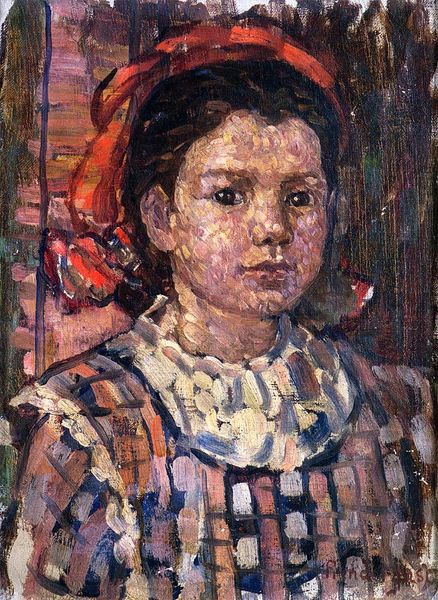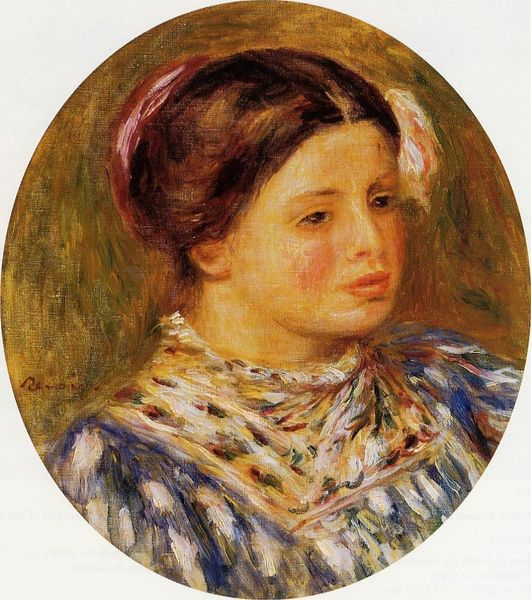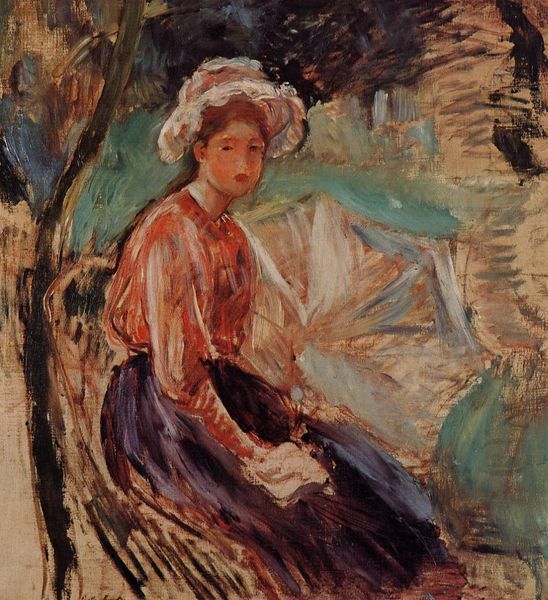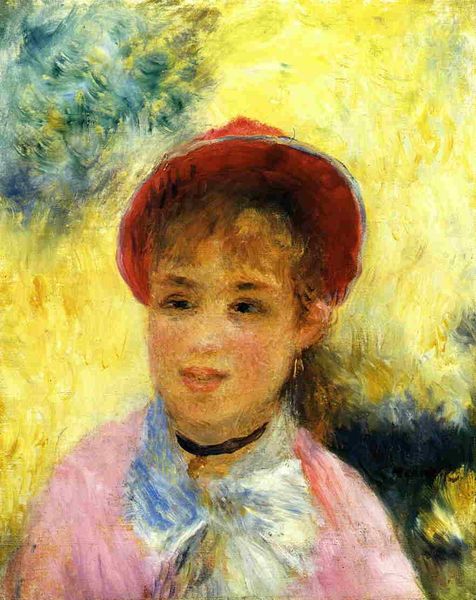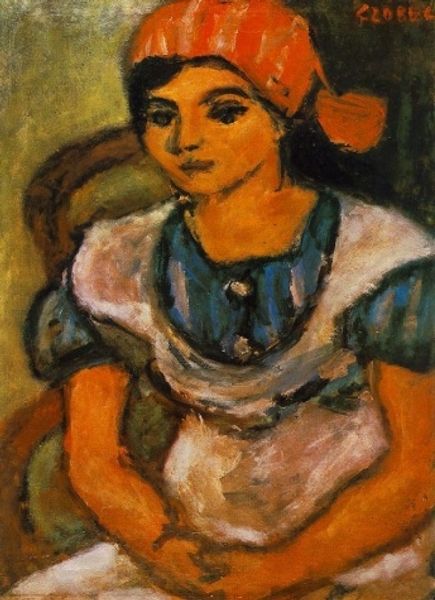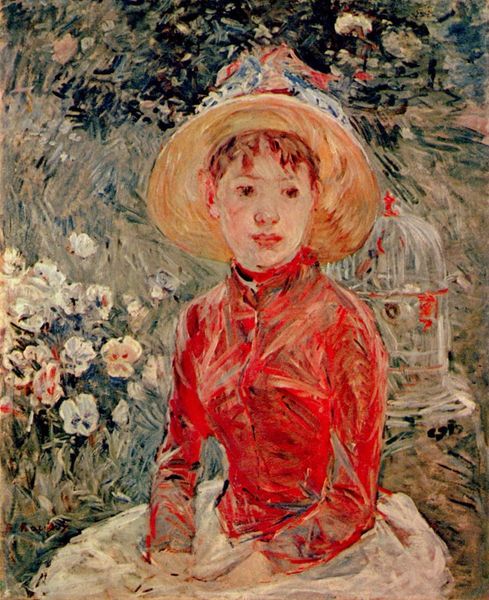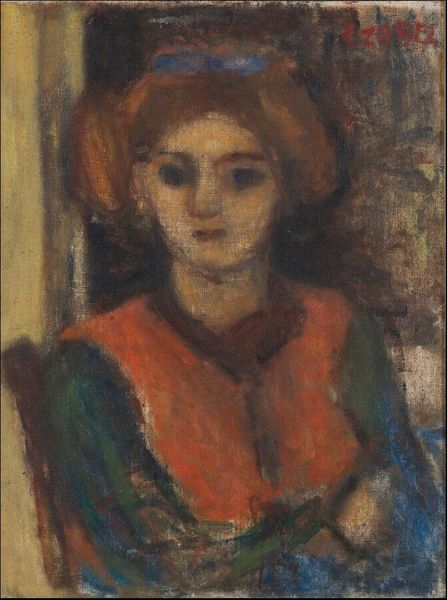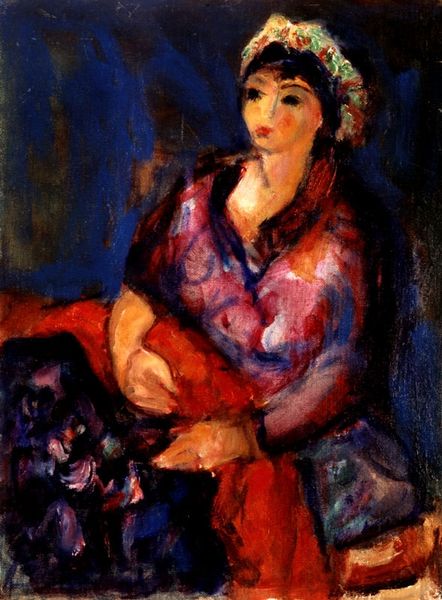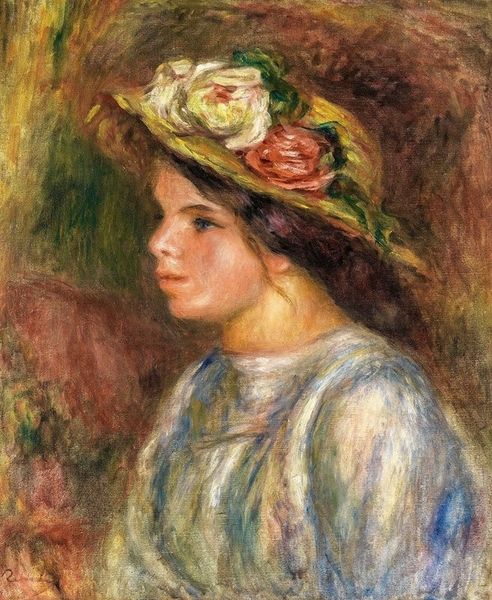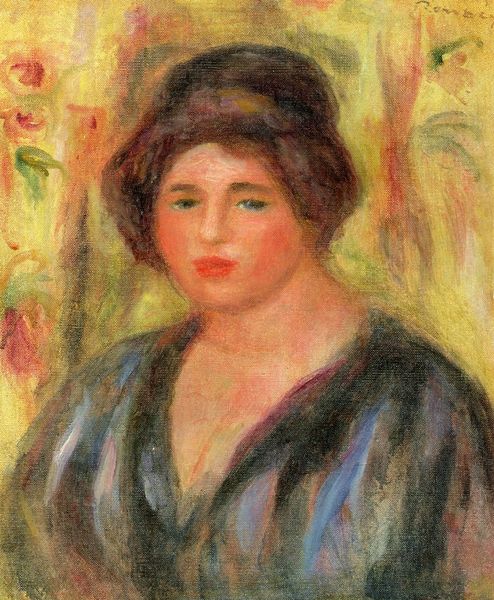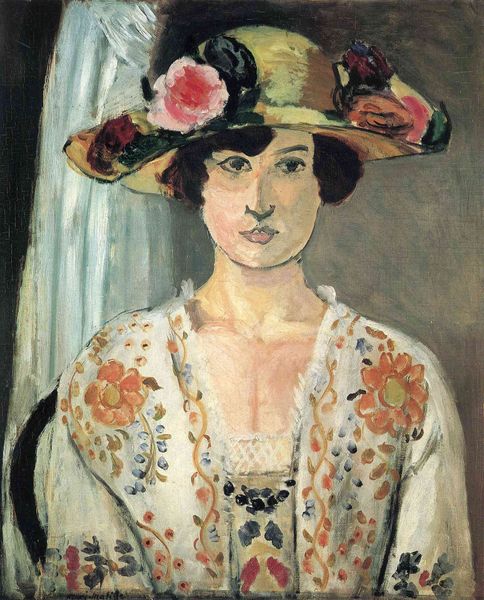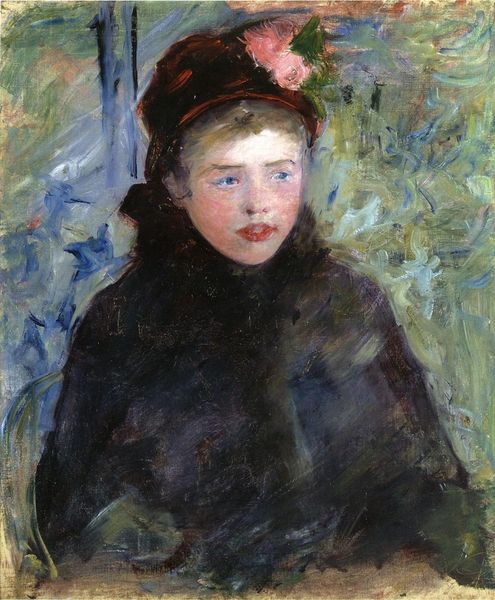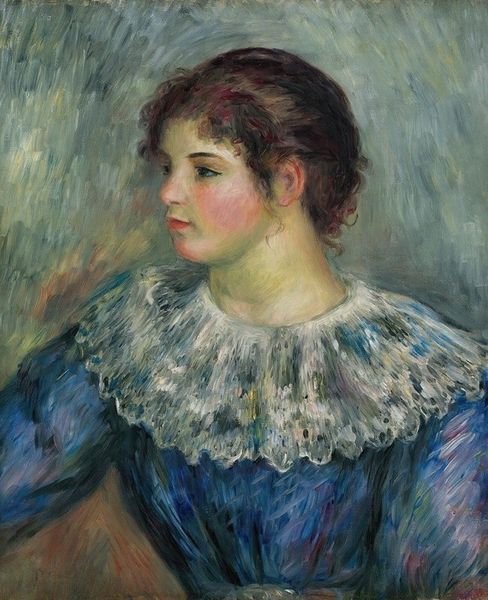
painting, plein-air, oil-paint
#
portrait
#
painting
#
impressionism
#
plein-air
#
oil-paint
#
oil painting
#
portrait art
Copyright: Public domain
This is Claude Monet's painting of Blanche Hoschedé, its strokes capturing more than just a likeness. Look at the latticework in the background; a grid, a screen, a structure holding the subject in place, yet also a barrier. This motif echoes through art history, from medieval grilles separating the sacred from the profane, to Renaissance garden designs symbolizing order imposed on nature. Here, it suggests a controlled environment, perhaps reflecting Blanche's position within Monet's world, both muse and stepdaughter. The gaze, gentle and slightly averted, hints at inner thoughts, a subtle defiance perhaps. Just as the Renaissance masters used the averted gaze to suggest piety and humility, Monet uses it to invite speculation. It touches something deep within us, a primal curiosity about the inner lives of others, a connection that transcends time. The latticework, the gaze, these are not just artistic choices but echoes of a collective memory, a constant negotiation between freedom and constraint, visibility and concealment.
Comments
No comments
Be the first to comment and join the conversation on the ultimate creative platform.
